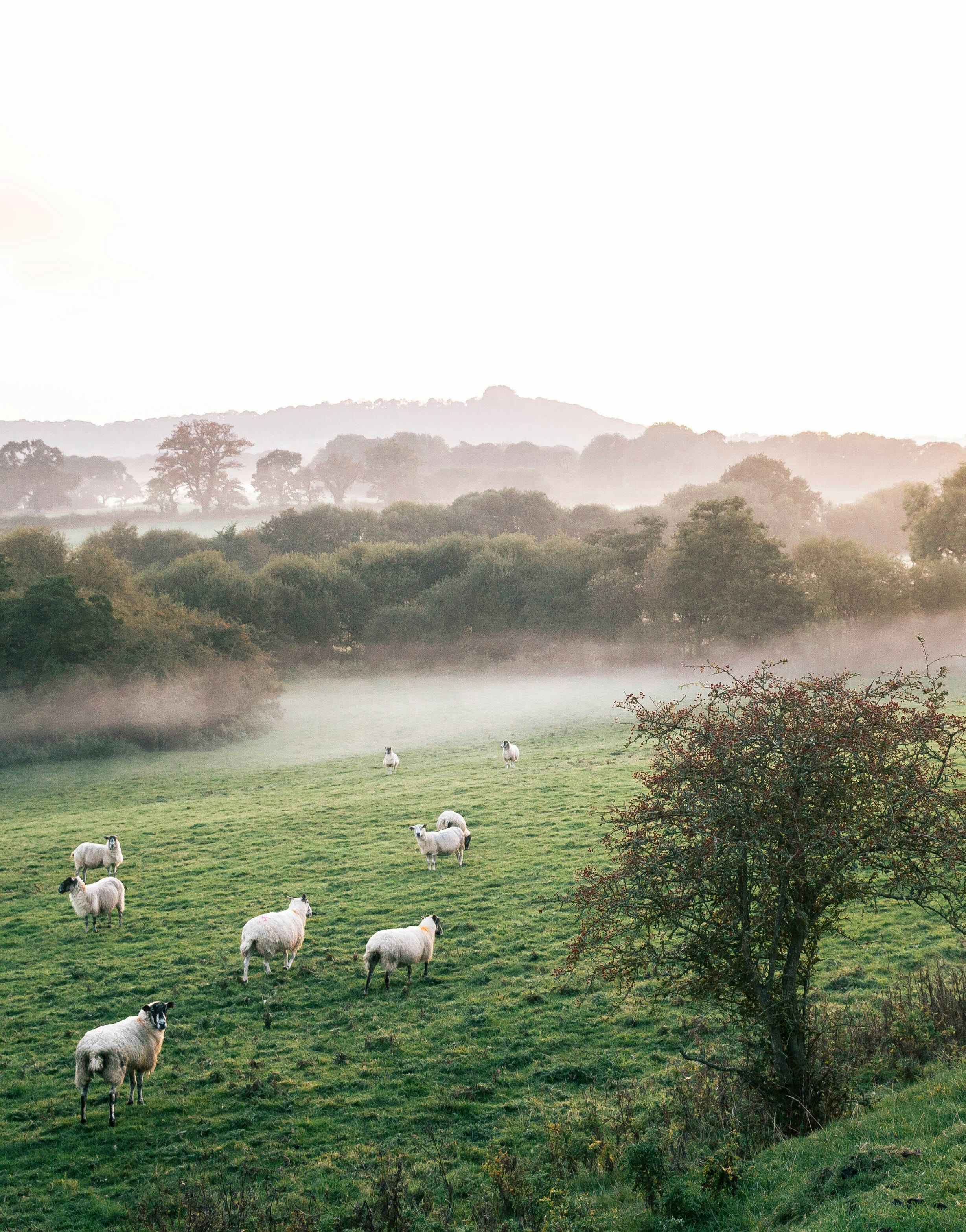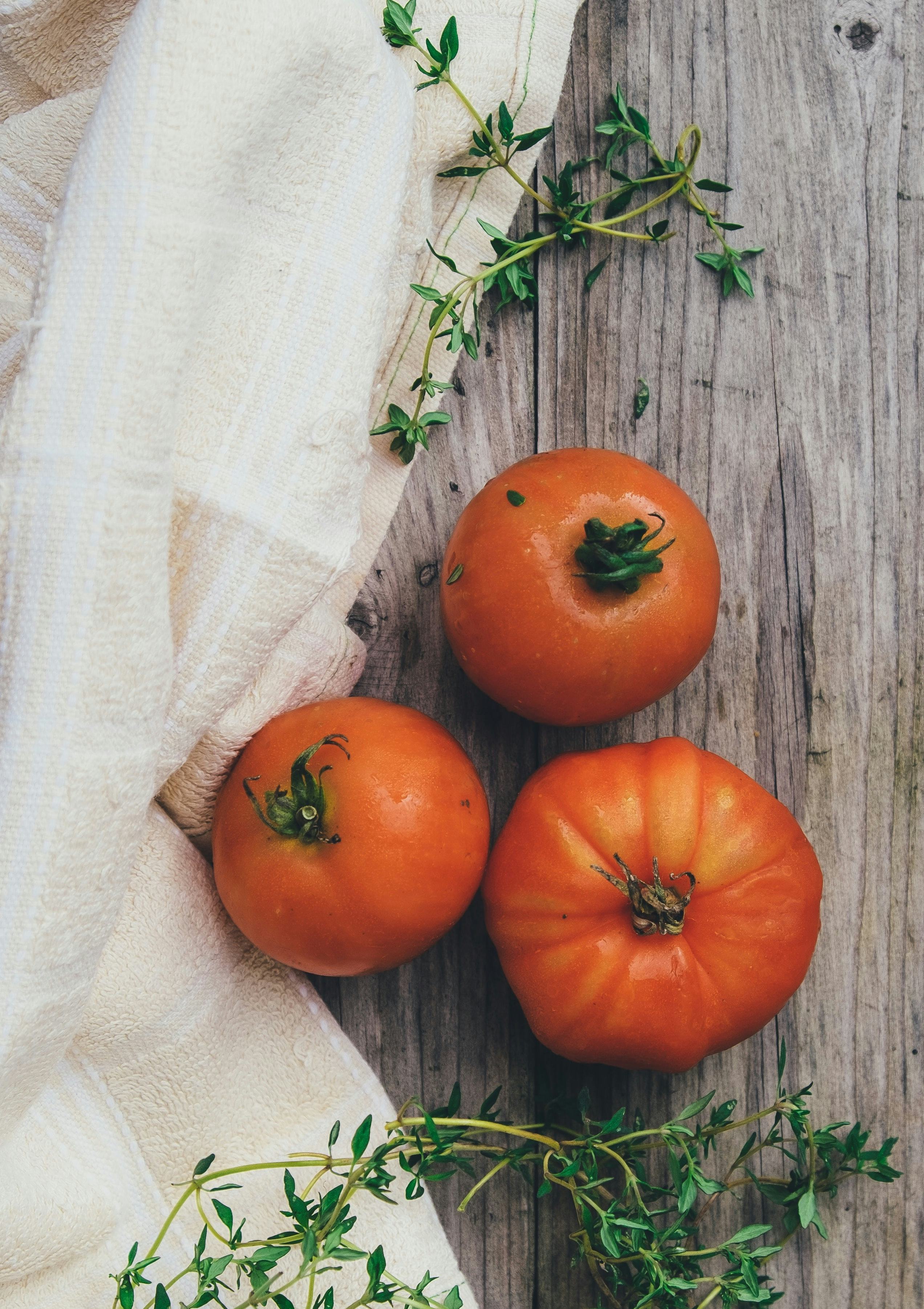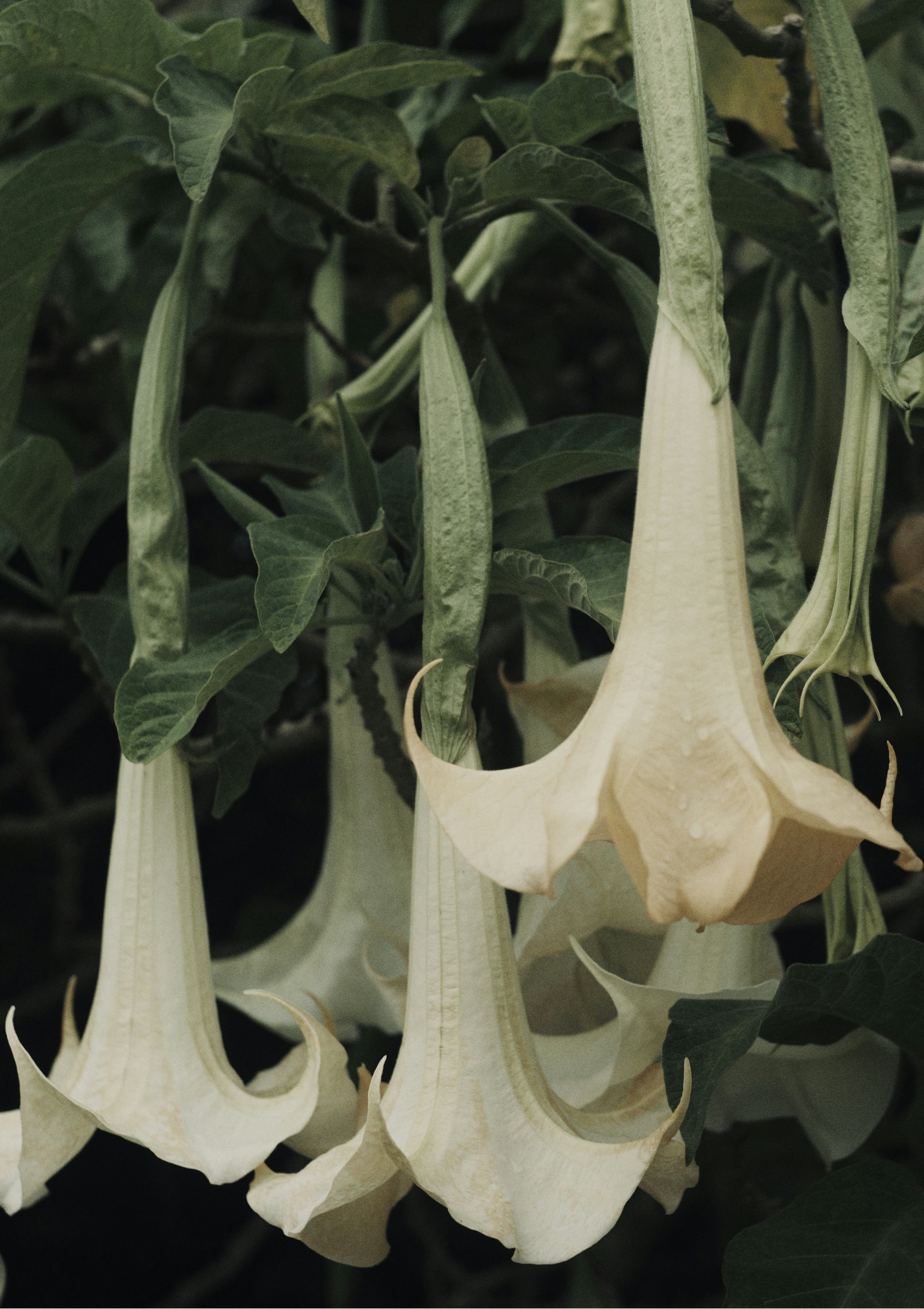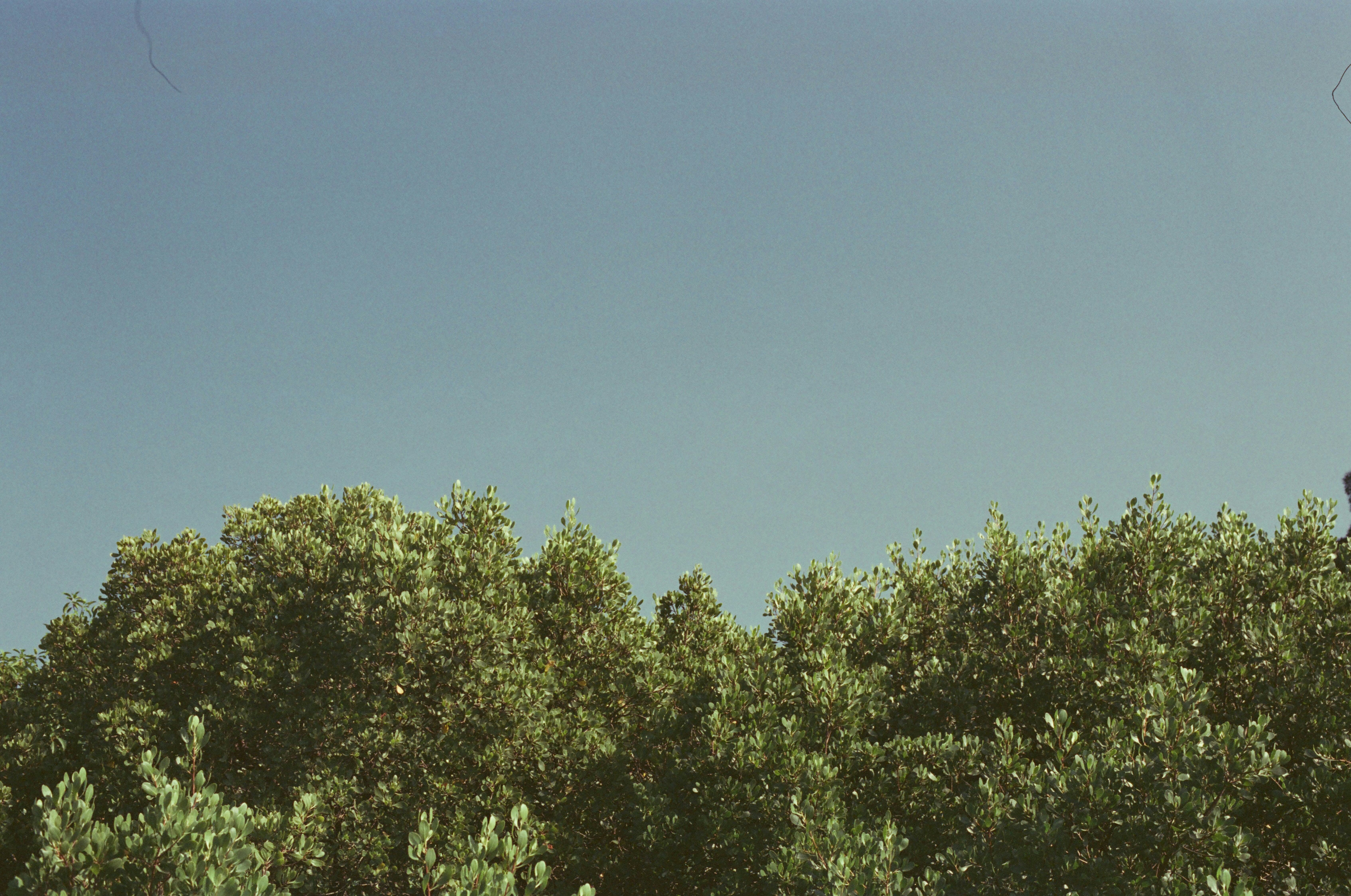The hot, muggy Maryland summers of my childhood were filled with outdoor activity. Some of this time was spent, willingly or not, helping out in the family garden. The garden took up a third of our backyard, with a splintery wooden fence separating the plot from the forest that surrounded our house.
Our garden was large enough that a tilling machine, gas-powered with rotating metal blades, emerged from the garden shed to expedite the turnover of soil each year. It was the heavy, grating sound of this machine, maneuvered by my dad at a far-too-early hour on a Saturday morning in April, that hailed the beginning of the growing season.
In the freshly tilled, compost-fortified earth, we planted rows of green beans, radishes, and lettuce from seed. A wooden stake headed each row, each capped with the empty seed packet to remind us what we had planted there.
After the seeds were in place, we planted eggplant and pepper seedlings. Squash and cucumber plants sprawled along the garden fence, where they yielded more massive zucchini and glossy yellow summer squash than we could eat. An herb garden laid fragrantly alongside a small section of blueberry bushes, which, despite our best efforts at protection, mostly fed the local wildlife—the bluebirds, mourning doves, and families of wild turkey frequently spotted around the clean-picked bushes.
But the stars of the show were the tomatoes, 15 or so plants of different varieties, each small seedling carefully hand-selected by my dad from a roadside farm stand. When my two siblings and I went along to choose the plants with him, we held the damp cardboard boxes filled with seedlings protectively as if they were puppies on the ride home. When my dad went by himself, he buckled the boxes of plants into the car’s rear row, secure in our seatbelts.
Upon reaching our garden, the seedlings’ star treatment continued as my dad spritzed them with the garden hose and tucked them into their holes with blankets of rich compost. I won’t say those tomatoes were treated better than us kids, but they had it pretty good.
The rhythms of growing – planting, weeding, harvesting – guided us through the summer. I awakened each day to the tch, tch, tch of the sprinkler, which sat on a couple of milk crates in the center of the garden. My family eagerly watched the tomato plants for months leading up to the big moment in early July when the first tiny green marble of a cherry tomato at last turned a spectacular red. The larger tomatoes followed, and we admired their entertaining varietal names: Beefsteak, Better Boy, Early Girl, Celebrity Tomato.
My dad liked having our help in the garden, but there were rules, delivered in his assertive Boston accent and snapping us to attention like sailors. Water only the base of the plant, not the leaves, and not too much, but more than that. “For cryin’ out loud,” he would say as we tramped across freshly planted areas, “Watch where you’re going!”
And if we were hanging around doing nothing, we might as well do something productive, he would say, tossing over a bucket for weeds or a watering can. “Need a project? Plenty of weeds around here to keep you busy.”
But the most important instruction—and one we received annually—was how to pick the ripe tomatoes. We handled them as if they were in danger of popping like soap bubbles: “Don’t just yank at the thing,” my dad would say. “Twist and pull. Gentle fingers. Careful.” Celebrities, indeed.
For my siblings and me, our task was to inspect each tomato plant for the plump green bodies of tomato worms. We were instructed to squish the worms as we found them, but never did, instead flinging them as far as we could into the woods where we imagined a possum might slurp them up, or a hawk might swoop down upon them. Our work had benefits: between adventures in the woods near our home, we dashed into the garden to snack on handfuls of crisp green beans and sugar peas. Through the hottest days of August, we plucked sun-warm tomatoes and ate them like apples, letting the juice drip down our chins onto our bare feet.
By the time I was a teenager, the garden did not hold the same attraction that it once had. I spent more time indoors, in the blessedly cool air conditioning, and when I emerged it was to leave for sports practices, driving lessons, the homes of my friends with in-ground pools. My dad gave us lists of garden work to do, but I did these tasks begrudgingly, pulling weeds and watering plants quickly and then escaping back to the haven of AC and internet access.
Some nights, though, as the summer dusk came on and the air cooled, I flipped on the outside light and joined my dad in the garden. His cigar filled the air with an earthy pungency as we gathered handfuls of lettuce for dinner, or splashed chemical-blue Miracle-Gro on the roots of the finicky eggplants. With the Orioles game low on the radio, we didn’t talk much over the garden rows, but listened to the cicadas buzz, the mourning doves coo.
When I was 13, I sleepwalked for the only time in my life. On a night towards the end of the growing season, I shuffled outside on a dreamed-up mission to help my mother weed the herb garden. I awakened halfway around the side of the house, my feet cold and slick in the dewy grass, the bright moon like a harsh illusion of the sun overhead. The front door had locked behind me. I knocked for minutes, our dog barking alarmingly, before the lights inside flipped on. My parents opened the door, my dad wide-eyed and clenching my metal softball bat in his right hand. “I was trying to help in the garden,” I sobbed.
I have not sleepwalked since, but my anxious brain often revisits the garden in my dreams. Years after I last lent a hand in my childhood garden, the coronavirus pandemic brought life to a halt as swiftly as an unexpected frost. Visions of tending to the garden came nightly, bringing glimpses of my family, now scattered along the East Coast from Maryland to Florida, and of the childhood home that my parents sold years ago.
In my dreams, I walked barefoot through clumpy soil, twisting my toes into the earth. I flicked nightmarishly large tomato worms from plants and cranked on the squeaky water spigot to turn on the sprinkler: tch, tch, tch.
Yearning for comfort and distraction in the time of overcrowded hospitals and political strife that was the summer of 2020, I planted a garden on my apartment balcony. I gathered several planters and pots, carted home bags of soil, and masked up to purchase tiny vegetable plant seedlings at the farmers market.
As the metrics of hospitalizations and deaths rose through May, June, and July, my plants rose toward the sun. My first cherry tomato arrived late, well after the Fourth of July, and I carefully cut it in half to share with my boyfriend. I nurtured moments of happiness as I patted plants into place and dosed them with a big glug of water. As I anxiously bit at my nails while reading the news, my teeth caught bits of dirt from my efforts.
The tomato plants grew tall to form a jungle-like atmosphere on my balcony, a small forest that blocked me from view from the street below, and I took my work laptop outside to get fresh air. As I stared into space, I leaned down to sift the soil from the planters through my fingers. At night, I sat in my dark forest of plants, breathed the tangy-sweet smell of tomato leaves, missed my far-away family, and let the tears fall.
As all things pass, so did the growing season of 2020. The husks of my tomato plants stood desiccated in their pots, withered by winter, until April of 2021. I could not stand to throw them away and leave my balcony lifeless through the long pandemic winter. As spring arrived, I finally pried dry rootballs from their vessels and filled pots with fresh soil. My gardening ritual, which grounded me through a summer of loss, began anew as I pushed seeds into dirt and snuggled three carefully chosen tomato seedlings into their new homes.
I saw my parents in person for the first time in 14 months in March 2021. We delivered updates to one another: an engagement, new babies in the family whom we have seen only in photos, my parents’ scheduled second dose of the vaccine. But soon enough, in this changed world we found our rhythm. We bantered blissfully of winter snow totals and a fresh baseball season, their vegetable garden in their new home state, and the black bears that roam their neighborhood. How’s the fishing been? Do you remember that time I sleepwalked? What kind of tomatoes grew best for you last year?
Before we parted, my dad handed me a plastic grocery bag brimming with curly green kale and sprigs of lilac-flowered rosemary – their first harvest of the year.
On my balcony, the rhythms of growing continued into the fall this year. The tomato jungle – joined this year by a bushy basil plant and clambering, chaotic vines of green beans – has swayed protectively around me all summer, producing a few tiny tomatoes in return for sunshine and generous water pours. When I took a trip out of state this summer, I asked my cat-sitter to water the plants for a few days. To my dismay, I returned to drenched soil and browning leaves, a horrific case of overwatering (“for cryin’ out loud!”).
Next time I will demonstrate the watering precisely. And I will show them how to pick the tomatoes correctly before I go.
Annalise Kenney is a writer based in Annapolis, Maryland. She works in communications for a state natural resources agency and is pursuing a master's degree in science writing at Johns Hopkins University. She writes about nature, the environment, and our roles as messy, hopeful humans.
Discover more from Annalise Kenney.







.jpg?ixlib=gatsbyFP&auto=compress%2Cformat&fit=max&q=50&w=2516&h=1792)

